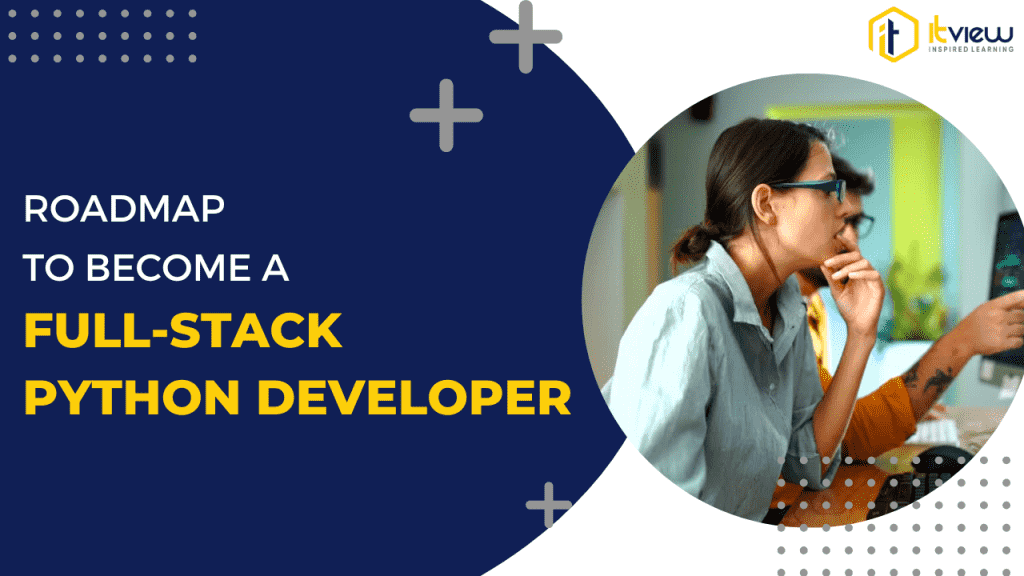In today’s tech-driven world, web development is a lucrative and sought-after career path. As businesses increasingly rely on dynamic and user-friendly websites, the demand for skilled full-stack Python web developers continues to grow. Whether you’re just starting your coding journey or looking to enhance your skills, this comprehensive guide will help you navigate the roadmap to becoming a proficient full-stack Python web developer.
What Is Full-Stack Python Web Development?
A full-stack Python web developer is someone proficient in both frontend (client-side) and backend (server-side) development using Python as a core programming language. This role requires a blend of programming, design, and problem-solving skills to create seamless, end-to-end web applications.
Key Technologies for Full-Stack Python Web Development:
- Frontend: HTML, CSS, JavaScript, and frameworks like React or Angular.
- Backend: Python, Django, Flask, or FastAPI.
- Database: MySQL, PostgreSQL, MongoDB.
- Version Control: Git and GitHub.
- Deployment Tools: Docker, Kubernetes, AWS, or Heroku.
Why Choose Python for Full-Stack Web Development?
Python is one of the most versatile and beginner-friendly programming languages, making it an excellent choice for web development. Here’s why Python is ideal for full-stack development:
- Ease of Learning: Python’s simple syntax and readability make it perfect for beginners.
- Rich Ecosystem: Extensive libraries and frameworks like Django and Flask streamline backend development.
- Community Support: A vast community of developers and resources to assist you at every step.
- High Demand: Companies across industries rely on Python for web development, data analysis, AI, and more.
Roadmap to Becoming a Full-Stack Python Web Developer
Step 1: Learn the Basics of Web Development
Start with a strong foundation in web development concepts.
Key Skills to Master:
- HTML & CSS: Structure and style web pages.
- JavaScript: Add interactivity and dynamic features.
Resources:
- Beginner-friendly platforms like freeCodeCamp or Codecademy.
Step 2: Dive into Python Programming
Python is the backbone of full-stack development. Focus on the basics and gradually move to advanced topics.
Key Topics:
- Syntax, data types, and control structures.
- Object-oriented programming (OOP).
- Modules, libraries, and error handling.
Recommended Courses:
- Enroll in a Python full-stack developer course to gain hands-on experience.
Step 3: Master Backend Development
The backend is where Python truly shines. Learn to create robust server-side logic and APIs.
Tools and Frameworks to Learn:
- Django: A high-level web framework for rapid development.
- Flask: A lightweight framework for smaller projects.
- FastAPI: Ideal for building fast APIs.
- Database Management: MySQL, PostgreSQL, or MongoDB.
Pro Tip: Practice by creating CRUD applications and integrating APIs.
Step 4: Build Frontend Development Skills
Though Python focuses on the backend, understanding the frontend is essential for full-stack development.
Key Frontend Tools:
- React or Angular for building dynamic user interfaces.
- CSS frameworks like Bootstrap or Tailwind CSS.
Practice Projects:
- Build a portfolio website.
- Create interactive dashboards with Python and JavaScript.
Step 5: Learn Deployment and Version Control
Deploying your web applications is a critical step in becoming a full-stack developer.
Tools to Explore:
- Version Control: Git and GitHub for code collaboration.
- Cloud Platforms: AWS, Heroku, or Azure for hosting.
- Docker & Kubernetes: Containerization and orchestration tools.
Step 6: Work on Real-World Projects
Practical experience is key to mastering full-stack Python web development.
Project Ideas:
- Build a blog application with Django.
- Develop a task management app using Flask and React.
- Create an e-commerce site with integrated payment gateways.
Best Python Full-Stack Developer Courses
To fast-track your journey, consider enrolling in these courses:
- Full Stack Python Developer Course
- Covers Python, Django, and React.
- Includes projects and certification.
- Python Full-Stack Course with Deployment
- Focuses on end-to-end development.
- Teaches cloud deployment techniques.
- Full-Stack Web Development Using Python
- Combines Python, Flask, and frontend technologies.
- Emphasizes real-world application building.
Career Opportunities for Full-Stack Python Developers
Upon mastering full-stack development, you’ll be ready to explore exciting job roles:
- Full-Stack Python Developer
- Backend Developer (Python)
- Web Developer
- Software Engineer
With companies like Google, Microsoft, and startups constantly hiring, the possibilities are endless.
Conclusion
Becoming a full-stack Python web developer is a rewarding journey that combines creativity, problem-solving, and technical expertise. By following this roadmap, you’ll acquire the skills, experience, and confidence needed to build end-to-end web applications and thrive in the tech industry.
Ready to kickstart your full-stack developer journey? Enroll in our Python Full-Stack Developer Course today and unlock your potential!

